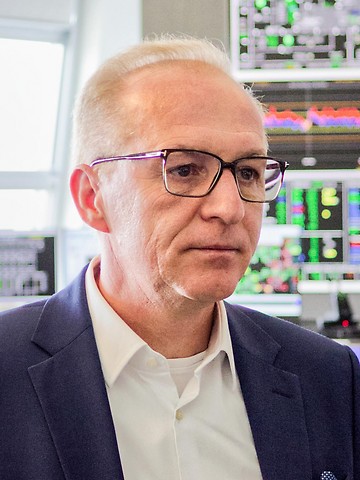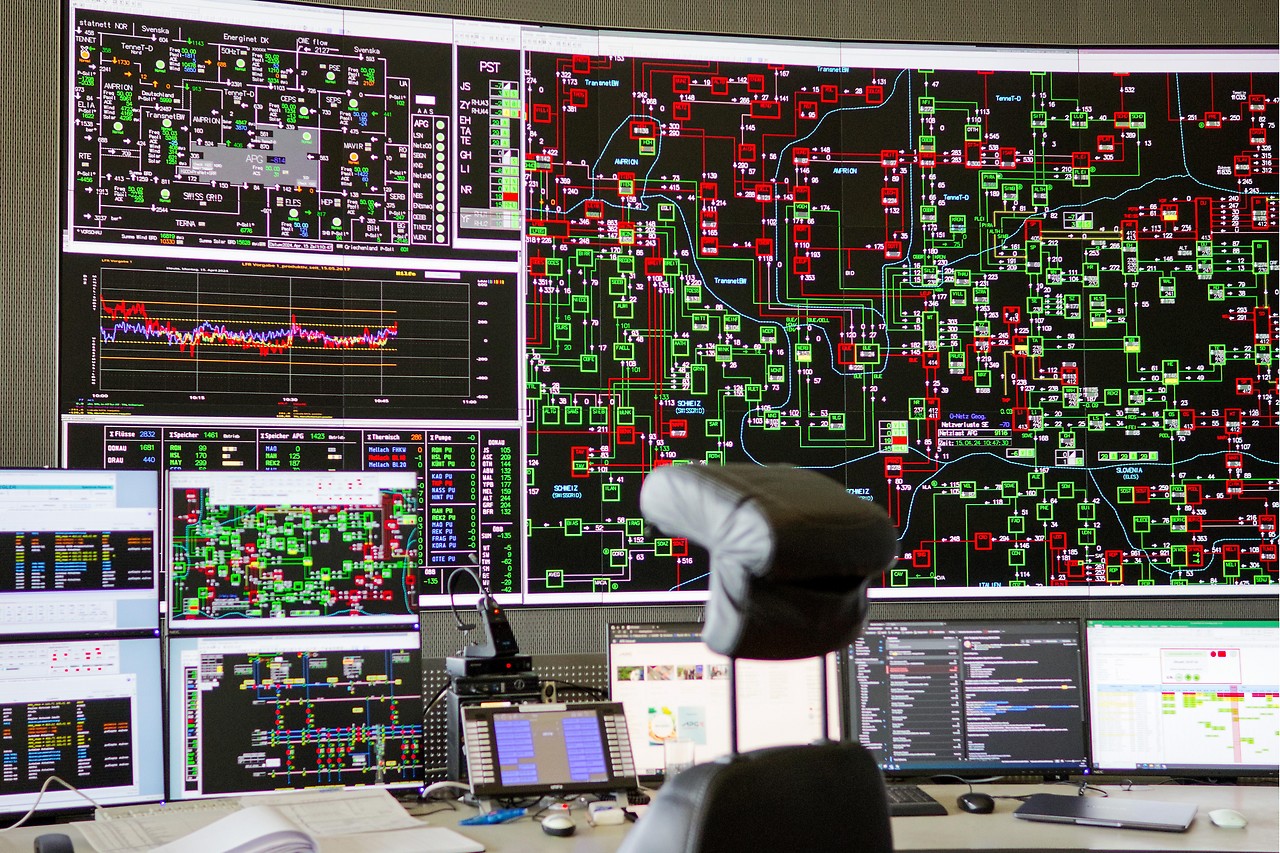“Closed due to construction” – an attribute used by teachers and parents when talking about adolescent boys. Indeed, the passage from childhood to adulthood involves intense “reconstruction work.” Now, more than a hundred years later, the power grid is not really young anymore. But the changes that will affect this most important source of energy supply in the coming years and decades actually remind us in many ways of the human journey to adulthood.
All power lines in Austria are 200,000 kilometers long – divided into seven levels: the low-voltage level below, which leads directly to our front door and is operated with a maximum of 1,000 volts, the high-voltage level above between 220 and 380 kilovolts (KV) with voltages more than 200 times higher – approx. 7,000 km long transmission network.
Sub-stations are needed for easy flow of power between stations. About 80,000 of them are in operation in this country – from small transformer houses at the lower network level to large substations that connect the nationwide transmission network to distribution networks in federal states. In the coming years, all of these components will need to be expanded or “enhanced” as they are called in technical parlance.
Wind and solar power are expected to triple by 2030
By 2030, Austria wants to cover its annual electricity needs entirely from renewable sources. So the amount of electricity coming from wind and solar energy is expected to increase by more than 30 TWh per year – more than three times the current level.

However, wind farms are currently mainly located in the east of the country. Most of the new wind turbines are to be built in Lower Austria and Burgenland – the ideal conditions for harvesting the wind. But both federal states have more ambitious expansion plans for PV systems.
Rocky road from east to west
The problem is that to keep the power grid stable, the electricity needs to be reused immediately. What do you do when the sun is shining and the wind is blowing – but there's not much demand for electricity?

A (partial) solution has been part of the domestic energy infrastructure for decades: pumped storage power plants. But almost all systems are located in the west of the country, precisely because the geography is especially suitable for reservoirs.

“From 2030, we will have about 7,000 to 8,000 MW of pumped storage capacity in the West – and up to 20,000 MW of renewable generation in the East,” says Gerhard Christiner. He is the technical director of the Austrian Power Grid (APG), which operates the nationwide transmission network. He knows: it won't work on the current network.
APG currently receives about 3,000 MW of electricity from east to west. “We definitely need to expand our west-east axis,” says Christiner. “First and foremost – unfortunately there's no way around it – we have to build new lines. And sometimes we need to strengthen existing lines, and to do this we have to remove existing lines and install stronger lines.
Less new construction with warm networks
As much as APG avoids physical expansion, it tries to use alternatives, according to Christiner. An APG boss, for example, mentions a “dynamic line rating” or “thermal rating” setting. Behind this is a network of sensors on cables that measure wind speed and temperature.
As more electricity is sent through a cable, it heats up. But external conditions, i.e. weather, can also affect the temperature of the rope. “If it's zero or five degrees below zero, and then the wind blows, it cools down a lot. That means I can carry significantly more electricity through this cable,” says Christiner.
High-temperature cables promise more electricity transport without having to build or expand new routes. They can be operated at significantly higher temperatures – and therefore higher currents. According to the APG boss, around 40 percent more electricity can be transported. Although these ropes are not cheap, it still pays compared to building a new or widening track, including all the approval procedures.
“Smarter” network for greater flexibility
APG boss says expansion of networks is “inevitable”. But that's not the end: “We need a better, more digital network.” For example, consumers “receive appropriate price signals” and this is “attractive to change consumption behavior.” In other words: everyone needs to consume electricity, especially when it's available in large quantities – and cheap accordingly.

Christiner is not alone in this approach. The resilience of the power grid has become an energy policy story of sorts. When it comes to distribution networks, “it is important to see them in the future not only in a more decentralized way, but also in a more flexible way,” says Thomas Kienberger, professor of energy network technology at Leoben University. . Then they said, “For every kilowatt of output, the network does not have to be expanded so that it is behind it. This means that we need network expansion, but not extensive.
Netz is looking for its new location
But no matter how well integrated production and consumption are, it is not possible without the potential to save electrical energy in the future. This is not only related to the volatility of wind and solar power; But Austria – and the rest of Europe – wants to change its energy system. Fossil fuels such as crude oil and natural gas currently form the largest share of the energy bag. In the future, they must accommodate climate-neutral alternatives.
Often this means direct conversion to electrical energy. But at the same time it means that energy systems and energy networks must grow closer together. The technical term for this is sector coupling. One can also say: In the coming years, the power grid will have to find its place in the system again.
“Try very little”
This integration is particularly evident when converting electricity to green hydrogen. On the one hand, the gas energy source is used as seasonal storage, and on the other hand, it is considered an important fuel for industrial processes that cannot be easily electrified.

Political plans for hydrogen infrastructure are correspondingly ambitious – both in Austria and in Europe. But, there is a problem with implementation. “If you look behind the scenes, little has happened on the to-do side in Austria,” says Christiner. Kienberger, an energy network technician, also criticizes the lack of speed. “We have this narrative, technically everything is there. Personally, I'm not 100% convinced that it's true, not enough tests are happening and the technology is not fully developed.
According to the university professor, this is also due to “stakeholder communication” – or the lack thereof. In fact, some things are not as simple as they seem at first glance. AGP board member Christiner complains, for example, that his company as a network operator is not allowed to operate an electrolyser – meaning it is not allowed to use electricity to produce hydrogen. “From E-Control's point of view, the electrolyser is an asset that should not be in the network. They want to keep it competitive,” says Christiner.
An acrimonious separation of more than 20 years
E-Regulatory Board member Alphonse Haber confirms the narrow legal limits the law imposes on network operators. “It is important that the monopoly structure is maintained in the network area and not mixed with the market. The network operator has the task of ensuring secure traffic of a certain quality. “Feeding on energy really needs to be left to the market,” says Haber.
Behind this is the fragmentation of the energy market carried out by the EU at the turn of the millennium. Since then, government regulated network operators on the one hand and power generation and energy trading in a liberalized market on the other. Kienberger says the division was created for “good reasons.” Sectoral connectivity and greater flexibility now require “well-considered and clearly defined rules establishing links between roles and areas”.
“Opening the First Door”
It is not clear what role the government should play and to what extent it should be allowed to intervene in the market. One task that politics definitely has is to provide legal framework. Especially when it comes to feeding in hydrogen, ,ing, ing]on board member of the E-Regulatory Board member Haber some more.
At the same time, says Kienberger, cross-sector regulations need to be even stronger. It was only at the beginning of April that the Austrian Network Infrastructure Project (ÖNIP) was presented in its final form by the Ministry of Climate Protection, and Kienberger was also involved in its creation. The paper shows the extent to which the high voltage network needs to be expanded based on expansion plans for renewables. This is a “first step”, says the energy expert – “opening the door” to further develop the power grid.
We will all see what this development looks like in the coming years – consumers, but also producers with each new PV system on a roof. We won't just see new cables, but new technologies – perhaps even some changes in our own energy use. But one thing can already be said: with all these changes, the power grid and its operators cannot afford one thing – to be closed due to construction works.